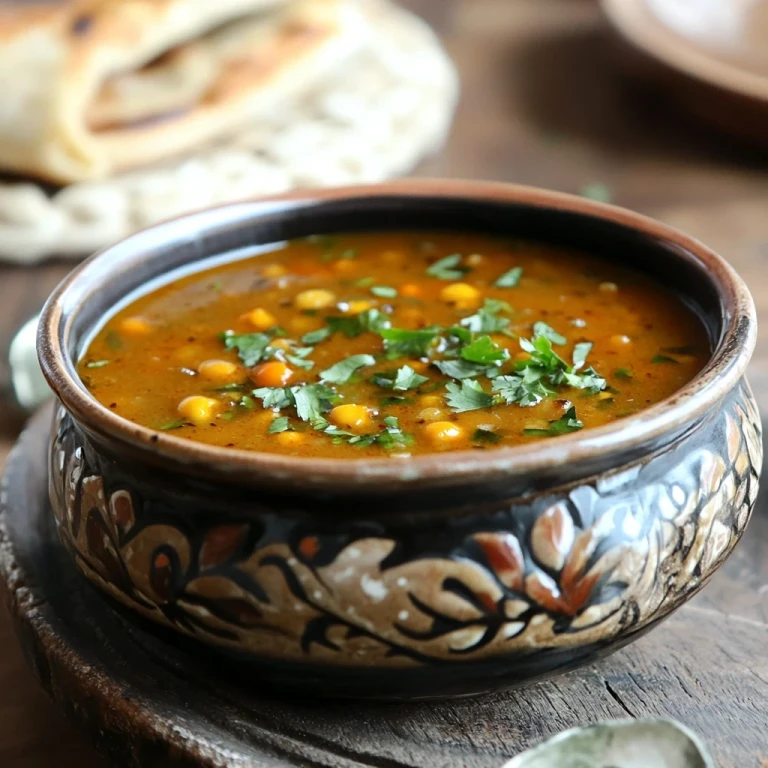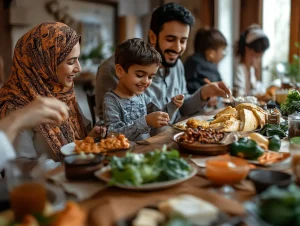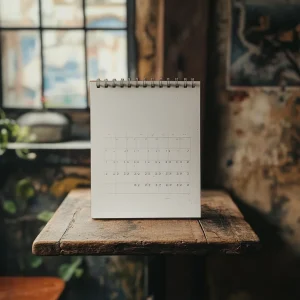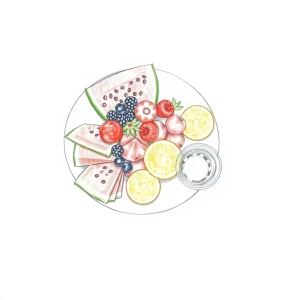Ramadan Recipes from Different Cultures
Ramadan Recipes from Different Cultures: A Journey Through Global Flavors. Muslims worldwide observe Ramadan through prayer together with fasting while performing spiritual self-reflection. The core values of Ramadan remain consistent, yet different cultures decorate their practices with distinct food traditions. All nations feature specific dishes that people serve during the Iftar period after breaking their daily fast. The recipes represent the diverse combination of cultural elements that merge with historical ingredients to form how different communities practice Ramadan observance.
This article guides readers through different countries as it presents some iconic recipes that people cherish during Ramadan holidays across various cultures. Filling cookies along with tasty pastries explains the healthy Ramadan dishes that hold deep cultural significance that show familial ties and shared feelings in this holy time.
Ramadan dishes hold deep cultural significance
Here are the details of the famous Delicious dishes with Ingredients around the Muslim World
Middle Eastern Delights: Harira Soup (Morocco)

Harira emerges as one of the signature foods of Moroccan dining since Ramadan because it offers colorful tastes blended with pungent spices and deep textures. The traditional Moroccan soup tagines appear at Iftar time by uniting tomatoes with lentils and chickpeas combined with cinnamon and turmeric and ginger spice mix.
The soup gets its finishing touch from a coriander garnish combined with lemon juice that completes its healthy and invigorating character.
Ingredients to Add:
2 tbsp. olive oil
1 onion, finely chopped
2 celery stalks, chopped
2 carrots, diced
2 tomatoes, chopped
1 cup lentils
1 cup chickpeas, soaked overnight
1 tsp ground turmeric
1 tsp ground ginger
1 tsp cinnamon
Salt and pepper to taste
5 cups vegetable or chicken broth
Fresh cilantro and lemon juice for garnish
Instructions to Prepare:
To begin, prepare the pot by heating oil where you sauté the mixture of onions and carrots and celery until they become tender.
Place tomatoes with lentils and chickpeas and mix them with turmeric and ginger and cinnamon. Fold the mixture while it is being coated with spices.
Add broth into the pot while heating the mixture until it reaches boiling point. The dish should cook on low heat while simmering for 45 minutes to one hour until both the lentils and chickpeas become soft.
To finish the dish, add salt along with ground pepper and fresh cilantro, then garnish it all with lemon juice.
The hot and filling nature of this dish serves as an outstanding option to end the fasting period by blending protein with fiber alongside spiced additives that sustain your nourishment during the entire night.
South Asian Flavors: Samosas (Pakistan/India)

Samosas function as major snack food items commonly enjoyed throughout the month of Ramadan, particularly in South Asian nations. Deep-fried samosa pockets serve as one of the main Ramadan appetizers after cooking becomes permissible when sunset arrives. They contain standard fillings of spiced potatoes along with peas and onions. People in Pakistan and India, along with Bangladesh, enjoy samosas both as the first course of a meal and as an accompaniment to chutney at any time.
Ingredients to Add:
2 large potatoes, boiled and mashed
1 cup peas (fresh or frozen)
1 onion, chopped
2-3 green chilies, chopped (optional)
1 tsp cumin seeds
1 tsp coriander powder
1 tsp garam masala
1/2 tsp turmeric powder
Salt to taste
10-12 samosa pastry sheets or phyllo dough
Oil for frying
Instructions to Prepare:
Heat a pan with oil until it reaches its sufficient temperature, then add cumin seeds followed by chopped onions along with green chilies until they achieve a delightful scent and become soft.
Melt the peas into the mix after adding spices that include coriander, garam masala, and turmeric together with salt. Cook the mixture for several minutes to reach a proper state of tenderness for the peas.
After combining, incorporate the mashed potato mixture into the pan. Take the filling out from heat to allow it to reach normal temperature.
After the mixture cools, you should form a cone shape with one samosa pastry sheet. Preheat a small piece of water along the edges of the cone before filling it with potato mixture.
Cook the samosas in deep oil until they become crisp and golden brown.
White samosas go well with either tamarind chutney or mint yogurt sauce.
The crispy samosas serve as excellent options for Iftar celebrations or function as evening snacks before dinner by uniting satisfying taste elements with textural experiences.
Turkish Tradition: Pide (Turkey)

Turkish residents truly love pide during Ramadan to the extent that they call it Turkish pizza because it features flatbread and savory fillings. Pide serves as an adaptable dish because it welcomes a range of fillings, including cheese, minced meat, and vegetables, which make it appropriate for all guests at dinnertime during Iftar.
The soft and pillowy dough goes perfectly with the delicious fresh topping choices.
Ingredients to Add:
2 cups all-purpose flour
1 tbsp. active dry yeast
1 tsp salt
1 tsp sugar
1/2 cup warm water
2 tbsp. olive oil
1 egg (for brushing)
The toppings for this dish include minced lamb, feta cheese, olives, bell peppers, tomatoes, and parsley, which can be used according to individual preferences.
Instructions to Prepare:
In a large bowl, mix flour, yeast, sugar, and salt. Warm water and olive oil will produce a dough when combined.
Regular kneading of the dough requires 5-10 minutes for it to become smooth with elasticity. Put the dough in a covered space to increase in size between 1 to 2 hours.
Preheat the oven to 475°F (240°C).
Move forward with dividing the dough into small balls before transforming each piece into an oval appearance.
Apply egg wash to the outer edge of the dough before topping with the combination of minced lamb, cheese, and vegetables.
After placing the dough in the oven, 10-15 minutes is needed until the crust turns golden brown.
Separately arrange fresh parsley as the topping before serving your hot food.
Pide pairs most perfectly with yogurt and salad to offer the complementary benefits of carbohydrates together with protein and vegetable nutrients.
Egyptian Comfort: Qatayef (Egypt)

Qatayef represents an essential Egyptian dessert that gains prominence in observance of Ramadan celebrations. The deep-fried pastry has a golden crust and contains a filling of nuts along with cream and sweet cheese. These delicious bites get finished with a sugar syrup topping.
People enjoy qatayef during the afternoon meal of Iftar because it stands as a special dessert that celebrates Ramadan’s festivities.
Ingredients to Add:
1 ½ cups all-purpose flour
1 tbsp. sugar
1 tsp yeast
½ tsp baking powder
1 cup warm water
2 tbsp. melted butter
Filling: sweet cheese, walnuts, or cream
Sugar syrup (optional): 1 cup sugar, 1 cup water, 1 tbsp. lemon juice, 1 tbsp. rosewater
Instructions to Prepare:
Place flour together with sugar and yeast with baking powder into a mixing bowl. Use melted butter and warm water while mixing together until the mixture becomes smooth. Let it rest for 30 minutes.
Set a non-stick pan on medium heat for cooking. The batter allows you to create miniature pancakes, which should be cooked until they show bubble formation across the surface.Let the pancakes reach room temperature before filling them with your desired food option, which can be cheese along with nuts and cream.Press the pancake into two sections before smoothing the joining edges together.Place qatayef in hot oil to achieve a golden brown color.
The solution requires boiling water along with sugar and lemon juice plus rosewater for ten minutes to prepare sugar syrup. You should apply drizzled topping to fried qatayef shortly before serving them.Qatayef serves as an elaborately rich dessert that provides sweetness at the conclusion of Ramadan’s meals.
Indonesian Favorite: Kolak (Indonesia)

During Indonesian Ramadan, Kolak stands as one of the most revered desserts, which people consume specifically for Iftar meals. A comforting mixture of bananas or sweet potatoes or pumpkin finished in coconut milk syrup with palm sugar and pandan leaves provides this dish its distinctive sweet flavor.
Kolak functions as an ideal dessert choice to quell hunger after breaking the fast since it offers both sweet and smooth flavors.
Ingredients to Add:
2 ripe bananas, sliced
The dessert requires one small piece of sweet potato along with peeled cubes.
1 cup coconut milk
2 tbsp palm sugar (or brown sugar)
1 pandan leaf (optional)
1 tbsp water
Instructions to Prepare:
A pot contains all ingredients, such as coconut milk mixed with palm sugar and pandan leaf when added.
Place the pot on heat at a simmer and add sweet potatoes with a cooking time of 10-15 minutes until they become tender.Continue heating the mixture for 5 minutes with bananas added to it.To enjoy this sweet dessert, you must serve it either warm or at cold temperatures.
During the Indonesian Ramadan observance, Kolak creates a delightful mix of natural sweetness with coconut milk sophistication that people love to enjoy.
FAQs for Ramadan Recipes from Different Cultures
Conclusion of Ramadan Recipes from Different Cultures
During Ramadan, people have the chance to discover multiple traditional dishes representing national food cultures across the world. During Ramadan, one can experience Moroccan Harira soup and Pakistani samosas alongside Turkish Pide and Egyptian qatayef while savoring both nourishment and religious meanings of solidarity and charity and inner contemplation. Through Iftar meal recipes, you can both discover culinary diversity while joining in the unity of the Muslim world between your family and yourself.







